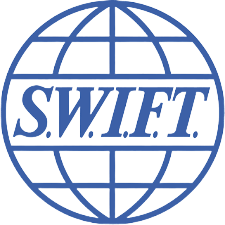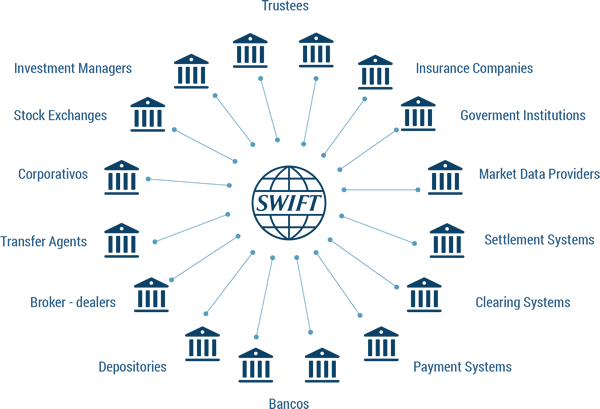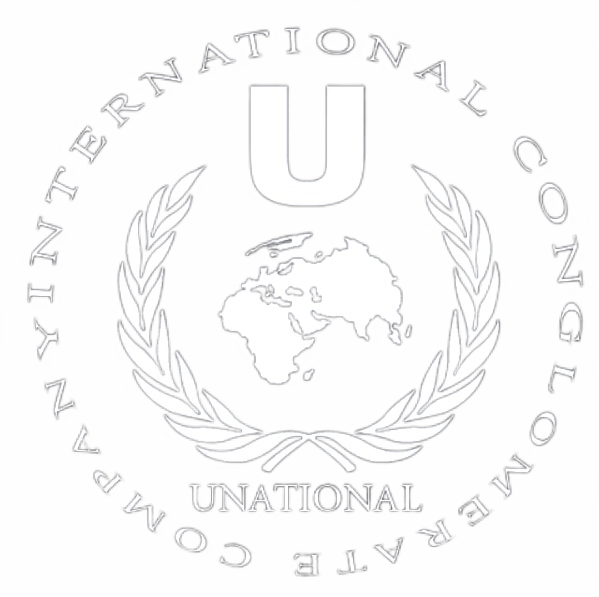UNATIONAL
Financial Group
I am text block. Click edit button to change this text. Lorem ipsum dolor sit amet, consectetur adipiscing elit. Ut elit tellus, luctus nec ullamcorper mattis, pulvinar dapibus leo.
Banking
Advisor
Accounting
Budget
Planning
Management
About SWIFT
Society for Worldwide Interbank Financial Telecommunication
SWIFT (Society for Worldwide Interbank Financial Telecommunications) is a global member-owned cooperative that functions as a huge messaging system. Members (banks and other financial institutions) use it to quickly, accurately, and securely send and receive information, primarily money transfer instructions.
Key Takeaways
- Society for Worldwide Interbank Financial Telecommunications (SWIFT) is a member-owned cooperative that provides safe and secure financial transactions for its members.
- This payment network allows individuals and businesses to take electronic or card payments even if the customer or vendor uses a different bank than the payee.
- SWIFT is the largest and most streamlined method for international payments and settlements.
- SWIFT works by assigning each member institution a unique ID code (a BIC number) that identifies the bank name and the country, city, and branch.
- SWIFT has been used to impose economic sanctions on Iran, Russia, and Belarus.

About SWIFT
About SWIFT
Society for Worldwide Interbank Financial Telecommunication
SWIFT (Society for Worldwide Interbank Financial Telecommunications) is a global member-owned cooperative that functions as a huge messaging system. Members (banks and other financial institutions) use it to quickly, accurately, and securely send and receive information, primarily money transfer instructions.
Key Takeaways
- Society for Worldwide Interbank Financial Telecommunications (SWIFT) is a member-owned cooperative that provides safe and secure financial transactions for its members.
- This payment network allows individuals and businesses to take electronic or card payments even if the customer or vendor uses a different bank than the payee.
- SWIFT is the largest and most streamlined method for international payments and settlements.
- SWIFT works by assigning each member institution a unique ID code (a BIC number) that identifies the bank name and the country, city, and branch.
- SWIFT has been used to impose economic sanctions on Iran, Russia, and Belarus.

About SWIFT
Engineering, procurement, and construction (EPC) contracts (a type of turnkey contract) are a form of contract used to undertake construction works by the private sector on large-scale and complex infrastructure projects.
Program Evaluation Review Technique (PERT) is a project management planning tool used to calculate the amount of time it will take to realistically finish a project. PERT charts are used to plan tasks within a project — making it easier to schedule deliverables and coordinate with team members.
Engineering, procurement, and construction (EPC) contracts (a type of turnkey contract) are a form of contract used to undertake construction works by the private sector on large-scale and complex infrastructure projects.
Is the application of processes, methods, skills, knowledge and experience to achieve specific project objectives according to the project acceptance criteria within agreed parameters. Project management has final deliverables that are constrained to a finite timescale and budget.
Engineering, procurement, and construction (EPC) contracts (a type of turnkey contract) are a form of contract used to undertake construction works by the private sector on large-scale and complex infrastructure projects.
Is the application of processes, methods, skills, knowledge and experience to achieve specific project objectives according to the project acceptance criteria within agreed parameters. Project management has final deliverables that are constrained to a finite timescale and budget.


UNATIONAL PROJECT MANAGEMENT
01
Project Mean
A piece of planned work or an activity that is finished over a period of time and intended to achieve a particular purpose
02
Project management
Is the application of processes, methods, skills, knowledge and experience to achieve specific project objectives according to the project acceptance criteria within agreed parameters. Project management has final deliverables that are constrained to a finite timescale and budget.
03
Standards Peroject Management Samples
PMBOK
APM
British Standard-BS6079
JPMF
ISO
CE
Others
05
Subcontractore
Lorem ipsum dolor sit amet, consectetur adipiscing elit. Sed auctor turpis eu arcu sagittis, id sagittis justo eli suscipit.
06
Supplies
Lorem ipsum dolor sit amet, consectetur adipiscing elit. Sed auctor turpis eu arcu sagittis, id sagittis justo eli suscipit.
08
Subcontractore
Lorem ipsum dolor sit amet, consectetur adipiscing elit. Sed auctor turpis eu arcu sagittis, id sagittis justo eli suscipit.
09
Supplies
Lorem ipsum dolor sit amet, consectetur adipiscing elit. Sed auctor turpis eu arcu sagittis, id sagittis justo eli suscipit.

Financial Planning and Analysis (FP&A) play a crucial role in companies, performing budgeting, forecasting, and analysis that support major corporate decisions of the CFO, CEO, and the Board of Directors. My personal experience in strategy analysis and development can serve a lot of different industries. I exactly know whether to use both quantitative and qualitative analysis of all operational aspects of a company in order to evaluate the company’s progress toward achieving its goals and to map out future goals and plans. FP&A Analysts consider economic and business trends, review past company performance, and attempt to anticipate obstacles and potential problems, all with an eye toward forecasting a company’s future financial results.
FAQs ON FEASIBILITY REPORTS
A feasibility report is a business analysis tool that helps in better decision-making through its emphasis on studying the market. It is a multi-dimensional report that lets decision-makers see their proposals or business ideas through the lens of critical evaluation. It majorly researches key areas that impinge on businesses like the logistical, financial muscle required, and whether a new value offering can be delivered to the market. For instance, before introducing a major change in the software platform of a business, a feasibility study is done. The question of WHY and HOW of a new business model are put together in the form of a feasibility report.
In this blog, a download of Template 1 will give you the perfect answer to this query. The typical structure of a feasibility report has the agenda as the first slide; then, you go to the executive summary of industry you are in. Typically, you showcase a SWOT analysis thereafter to end with a microscopic analysis of your business again in this light. Then, the market is put under the scanner in terms of the opportunity, size, share, etc. Competition is studied next, with a slide or two on recommendations rounding up the well-researched effort. If you need a cover letter, please add it; you can also get one of these with a Download of our Template 2.
A feasibility report ensures that the business proposal actually passes the three tests of logistics, finance, and market demand. It is actually a way to get leaders to focus on the end-result of whether a new initiative passes muster, when seen through the hard-nosed, practical lens of business. Its importance also lies in specifying opportunities on when the business idea may work. In essence, a feasibility report breaks down swathes of the project into bite-sized chunks to see where it scores, and areas where the project could stumble. The report records these points of study and gives its broad overall recommendations on the feasibility of the project.
We have covered the answer to this in our Template 3. These feasibility report types take the business proposal and see it from the angle of operational feasibility, scheduling feasibility, legal feasibility, economic feasibility, and technical feasibility. With such precision in assigning segments to a feasibility report, the overall impact and recommendation generated is close to the truth (barring any probability error or data integrity issue). Each of these feasibility reports relate to a single project that could have mammoth importance like the launch of 5G internet or auctioning of spectrum in some developing countries.
It is critical that a feasibility report be well-organized and detailed, but in a specified format only. It starts with a detailed listing of the agenda and then has introduction as the business start. Most feasibility reports will then conduct a SWOT analysis of the business and the industry. The third segment/part of feasibility report deals with the market and its shades like research, market share of the firm, the landscape in which it operates and so on. Market Gap analysis is also a significant part, before it goes off to analyzing competitors and the products or services on offer. Revenue resources, sales projections, etc, come next with the final section devoted to the recommendations based on the study.